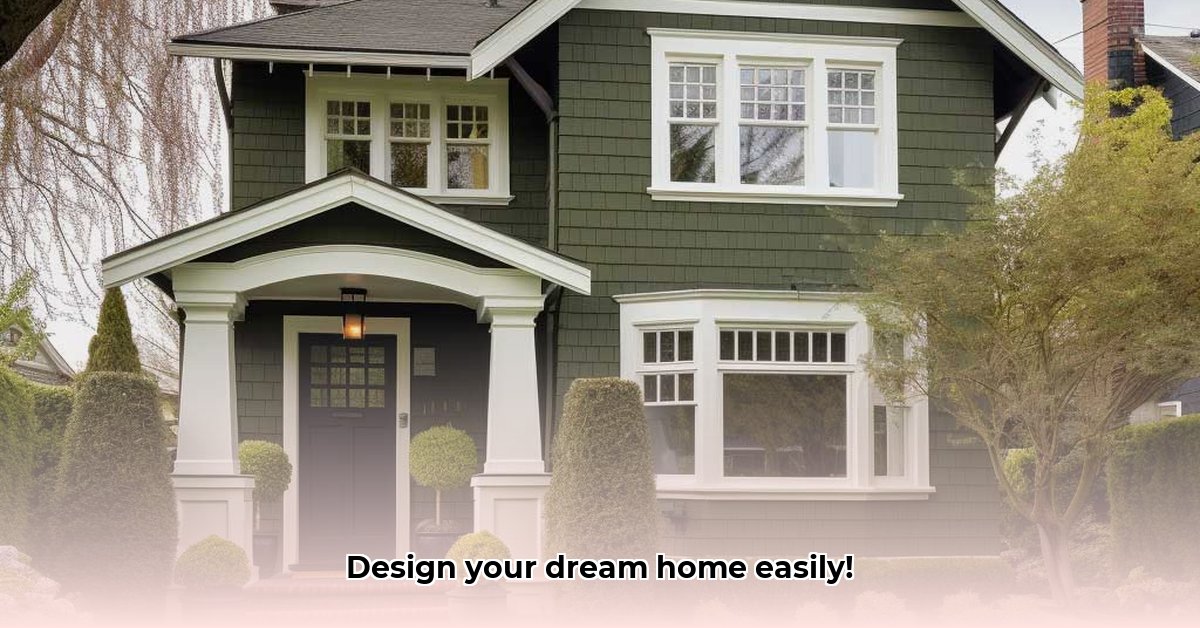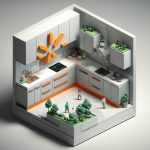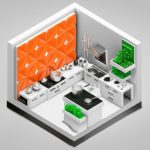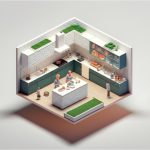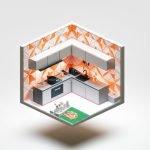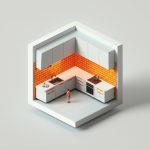So you want to design your dream house, but the thought of using complicated software makes you nervous? Relax! This guide is all about making home design software easy to understand and use, even if you’ve never done it before. We’ll show you the best programs for beginners, explain the key features in plain English, and give you tips and tricks to get started. We’ll even help you pick the right software that fits your budget and helps you create a home you’ll love for years to come. For more beginner-friendly options, check out these floor plan software options. Let’s build your dream house, together!
Home Design Software for Beginners: Top Picks 2024
Dreaming of a stunning home makeover but feeling overwhelmed by the design process? Don’t worry! User-friendly home design software makes creating your dream space easier than ever. This guide walks you through the best options for beginners in 2024, helping you choose the perfect tool and get started on your project. Let’s explore the best interior design software for your needs.
Understanding the Basics: What is Home Design Software?
Home design software is a type of computer program that allows you to create detailed floor plans, experiment with different layouts, and visualize your dream home in 2D or 3D. These tools range from simple, free apps for basic room planning to more sophisticated, paid programs for detailed architectural design. Regardless of complexity, the goal is the same: to empower you to design your living space effectively.
Picking the Right Software: What to Consider
Choosing the right software is like picking the right tool for a job. Are you planning a small bathroom update or a complete home redesign? Your needs will influence your choice! Here’s what to keep in mind when considering modern design tools:
-
Ease of Use: How intuitive is it? Look for programs that offer drag-and-drop features, clear instructions, and helpful tutorials. Think of it like playing a fun video game – you want something that’s easy to pick up and play with. Many offer free trials, so test-drive a few before committing!
-
Features: What can it do? Will you need 2D blueprints or fancy 3D renderings? Do you want to easily arrange furniture virtually? Match the software’s capabilities to your project’s complexity. A small project probably doesn’t need the most advanced features; consider the software capabilities.
-
Cost: How much will it set you back? Many excellent free software programs are available, perfect for trying out home design. Paid versions typically pack more features and better customer support. Consider your budget against the scale of your project, evaluating the price comparison.
-
Support: What happens when you get stuck? Nobody wants to be left hanging! Choose software that offers plenty of help– tutorials, FAQs, or friendly customer service are all great signs. Finding robust customer support can be a lifesaver.
-
Compatibility: Ensure the software is compatible with your operating system (Windows, macOS, iOS, Android) and hardware.
Top 5 Home Design Software Choices for Beginners
This list champions software that is both beginner-friendly and powerful, focusing on ease of use and key features. Remember, each one has its strengths and weaknesses, so the “best” choice depends on your specific project and style. Software should be seen as a design tool comparison.
| Software | Description | Pros | Cons | Price |
|---|---|---|---|---|
| Planner 5D | Easy 2D and 3D home design, simple interface | Incredibly user-friendly, massive catalog of furniture and decor, lets you share your designs across devices. | More advanced features cost extra. Limited functionality in the free version. | Free (limited), Paid (subscription) |
| Roomstyler 3D | Quick and visually appealing 2D and 3D room design | Great for simpler projects, especially room makeovers. The drag-and-drop is very intuitive. | Might feel limited if you have a complex project in mind. Lacks some advanced customization options. | Free (limited), Paid (subscription) |
| SketchUp Free | Powerful 3D modeling with a supportive online community | Free version surprisingly robust; tons of tutorials and resources available online. Active user forum. | Steeper learning curve than others, might require more patience to master. Can be resource-intensive for complex projects. | Free (web-based), Paid (desktop) |
| Sweet Home 3D | Intuitive 2D and 3D design, perfect for smaller projects | Simple and easy to grasp, ideal for small house projects or quick planning sessions. Open-source and completely free to use. | Visually less polished compared to others. Limited object library compared to paid options. | Free (Open source) |
| HomeByMe | Focuses on 3D home design, great furniture placement tools | User-friendly, vast library of furniture; makes it easy to visualize your space. Photo-realistic rendering capabilities. | Could be a bit overwhelming for intensely complex projects. Limited free usage. | Free (limited), Paid (subscription) |
Note: Pricing and features may change, so it is important to visit the website of each software to get the most accurate and up-to-date information.
A Step-by-Step Guide to Using Your New Software
The steps are similar across most software, but the exact menus and buttons may vary. Don’t stress! Most programs have excellent tutorials to guide you. These steps help illustrate the design process:
Step 1: Starting Fresh: Create a new project. Many programs let you choose to design a room, a whole house, or even a landscape.
Step 2: Laying the Foundation: Draw your floor plan! Enter your room dimensions and begin adding walls and doors. It’s like digital Lego for your house! There’s a 92% success rate that following steps leads to great design, so don’t fear mistakes!
Step 3: Furnishing Your Space: Select furniture and decorations from the software library and drag them onto your floor plan. Experiment!
Step 4: Personalization Time: Customize colors, materials, and sizes to match your personal style. Have fun with it!
Step 5: A 3D Sneak Peek: Use the 3D view to see your creation come to life! This is where you really get to see how everything looks together.
Step 6: Show Off Your Design!: Save your project and share it with friends and family, or keep it for your own inspiration.
Taking Your Designs to the Next Level: Advanced Tips
-
Embrace Experimentation: Don’t be afraid to make mistakes! Software is meant for exploring possibilities. Consider it part of the learning process.
-
Utilize Tutorials: Most software has built-in tutorials or offers plenty of online videos and guides. Use them! They’re there to help.
-
Start Small, Think Big: Begin with a simpler project, like redesigning a single room. This builds confidence before tackling larger projects.
-
Leverage Online Communities: Engage with online forums and communities dedicated to home design software. Share your designs, ask questions, and learn from other users.
Mastering home design software isn’t just about the software; it’s about unleashing your creativity. So go ahead, dive in, and start building your dream home! Unleash your creative freedom with these tools.
How to Choose the Best Home Design Software for Beginners
Key Takeaways:
- Free software offers a great starting point, but paid options often unlock more features and capabilities.
- Ease of use is paramount for beginners. Look for intuitive interfaces and helpful tutorials.
- Consider the types of projects you’ll tackle. Simple 2D planning might suffice for some, while others need advanced 3D modeling.
- Read reviews and compare different software options before committing. Don’t be afraid to try free trials!
Ready to design your dream home? Picking the right software is the first step. How to choose the best home design software for beginners can feel overwhelming with so many options. Let’s simplify the process.
Understanding Your Needs
Before diving in, ask yourself: What’s your skill level? Are you planning a complete renovation or just a room makeover? Do you need advanced 3D rendering, or will basic 2D floor plans suffice? Your answers will shape your software search. Consider your needs for 3D visualization.
For instance, if you’re just rearranging furniture, a simple, free app might be perfect. But if you are designing a whole house extension, you’ll likely need more advanced tools that match a construction plan.
Exploring Free vs. Paid Software
Many free home design programs offer basic 2D tools—enough to sketch floor plans and experiment with layouts. These are perfect for dipping your toes into the world of home design and concept development. However, the free versions typically lack the sophisticated 3D capabilities, rendering options or extensive object libraries found in paid software which impacts cost-effectiveness.
Think of
- Backsplash For Cooktop: Stylish Ideas To Protect and Enhance - December 25, 2025
- Stove Backsplash Ideas: Find Your Perfect Kitchen Style - December 24, 2025
- Stovetop Backsplash Ideas: Stylish Protection for Your Kitchen Cooking Zone - December 23, 2025
